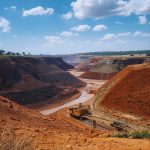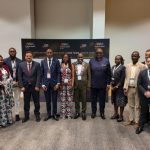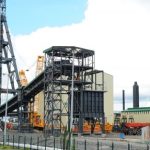Introduction
Zambia’s mining history dates back over a 100 years ago. This rich history is attributed to the fact that the country is endowed with a vast amount of mineral resources. Within its geographical confines, Zambia boasts of base metals, precious, industrial, gemstones, and energy minerals. Economically, Zambia’s mining sector contributes significantly to development. For instance, it accounts for about 14 percent of the Gross Domestic Product (GDP), over 70 percent of export earnings and about 14 percent of domestic revenue generation. Although this is the case, the citizenry feel that the country has not exploited the mining sector to attain economic prosperity. The reason for this state of affairs can be best elucidated by the many challenges the sector continues to face. These challenges range from being sub-mineral sector specific to industry wide. In this Monday opinion, I elaborate on some of the major challenges of the mining sector in Zambia and the steps government can undertake to provide remedial actions.
Challenges of Zambia’s mining sector
This section highlights some of the key challenges of Zambia’s mining sector.
(i) Mono-dependency on copper – The country has been heavily reliant on the copper mining sector. This has resulted in the under exploitation of other sub-mineral sectors to attain social-economic development. These sub-sectors include manganese, gold and gemstone etc.
(ii) Lack of a mineral asset valuation code– Despite a 100 years of mining the country cannot boast of a mineral asset valuation code. This has arguably led to the overpricing or under-pricing of mining assets to the detriment of the citizenry and at the benefit of multinational enterprises.
(iii) Lack of a mineral reserve reporting code – A mineral reserve reporting code is just as important as a mineral asset valuation code in the process of valuating mining assets. Unsound mineral resource / reserve statements translate in the incorrect computation of mineral asset values.
(iv) Inconsistent mineral fiscal policy – Zambia has been very inconsistent with its mining fiscal policy. In the last five years, the country has undertaken more than five reforms to its mining taxation regime. Frequent unilateral alteration of fiscal terms distorts the long term mine plans of mining investors and discourages future investments.
(v) Lack of geological information – This continues to undermine the planning process of the mining sector to attain nation-wide development. It is important to stress the fact that not only does geological information help with the planning process but it also encourages long term investment in the mining sector.
(vi) Underdeveloped Artisanal and Small-scale Mining (ASM) sector–The ASM sector is currently being faced with several challenges including lack of access to finance, lack of geological information, lack of basic technology in the mining process, and high tax rates. These challenges have inhibited growth of this important sector which continues to be perceived as an alternative livelihood for those that cannot get jobs in the formal sector.
(vii) Fraudulent provisions in the current taxation regime– Some tax provisions of the current taxation regime such as the current VAT system are susceptible to tax planning schemes such as transfer mispricing. This arguably leads to massive revenue leakages in the mining sector.
(viii) Lack of strong institutions to provide mining oversight– Zambia lacks strong institutions to provide oversight in terms of mining. It is important to note that mining companies engage in tax planning schemes such as misreporting of grade and production values, transfer mispricing etc. To curb these schemes, government needs to invest in capacitating state institutions to enhance vigilance of mining operations.
Remedial actions
A number of remedial actions can be undertaken by the government to ameliorate the highlighted challenges of the mining sector in the previous section. The following provide a summary:
(i) Government needs to diversify the mining sector into other mineral commodities such as gemstones, industrial minerals, manganese, and gold. This will widen the revenue base and limit the fiscal risk experienced when copper prices fluctuate.
(ii) Government needs to craft a mineral asset valuation code. This does not involve reinventing the will but simply adopting one of the international codes and fine tuning it to the case of Zambia. This will help standardise the mineral asset valuation exercise in the country.
(iii) To enhance correct valuation of mining assets the government needs to develop a mineral reserve reporting code that will be applied in unison with the developed mineral asset valuation code.
(iv) Zambia needs to exercise consistency with its mining fiscal policy by designing a predictable, stable and transparent fiscal regime that will stand the test of time.
(v) Government needs to formalise the ASM sector by providing an enabling environment through provision of basic services and facilities such as finance, technology, geological information etc.
(vi) Government needs to capacitate the Geological Survey Department (GSD) by apportioning at least 10 percent of mineral royalty to discharge its functions.
(vii) Government needs to discard fraudulent tax provisions like the current VAT system by crafting and implementing a non-refundable sales tax in the mining sector.
(viii) Government needs to capacitate state institutions to provide oversight of mining operations.
This is it for this week. Look out for next week’s article as we discuss issues around Trade and Development. About the Author Webby Banda is a Senior Researcher (Extractives) at The Centre for Trade Policy and Development (CTPD) and a Lecturer with the University of Zambia, School of Mines.















